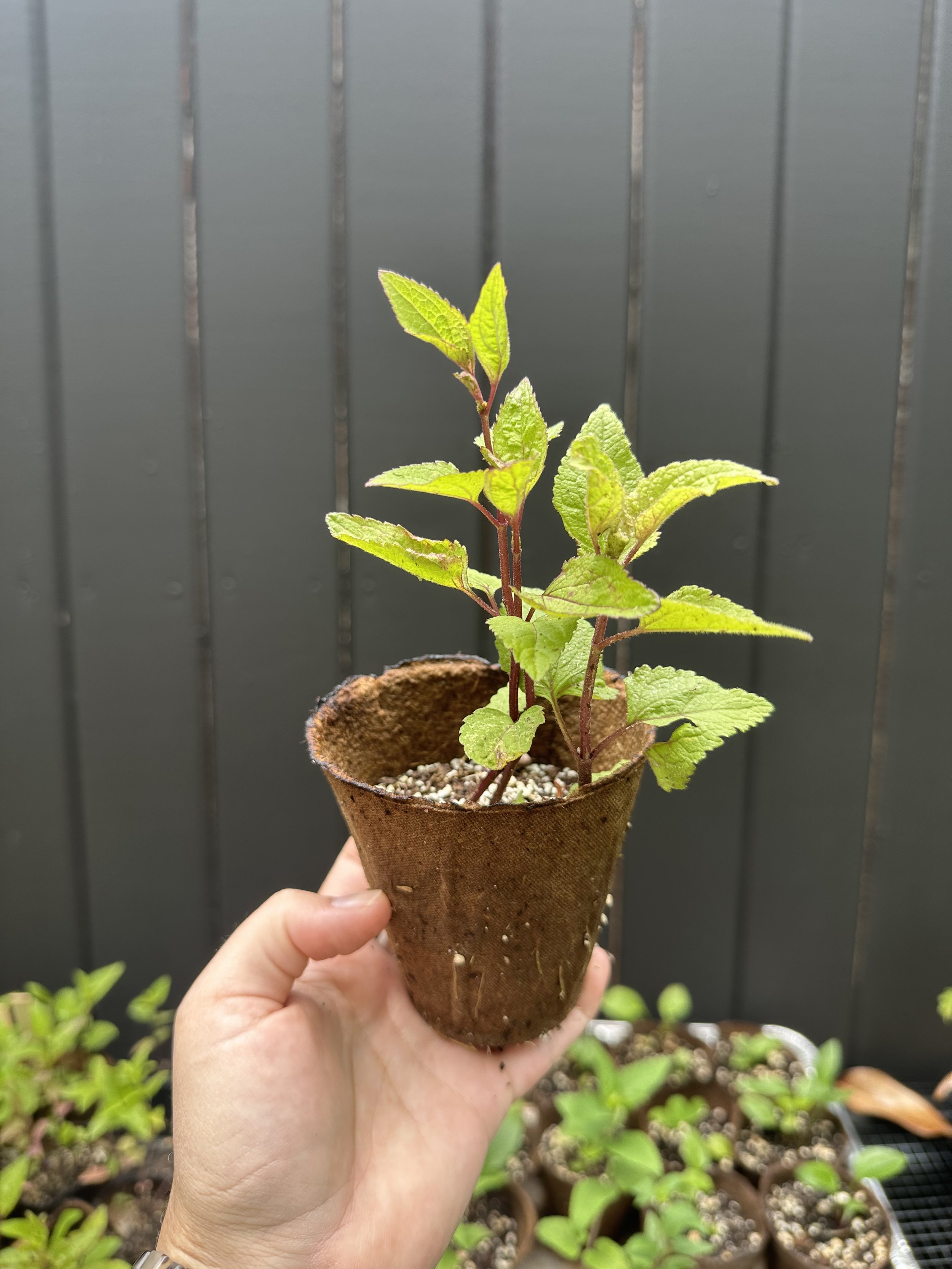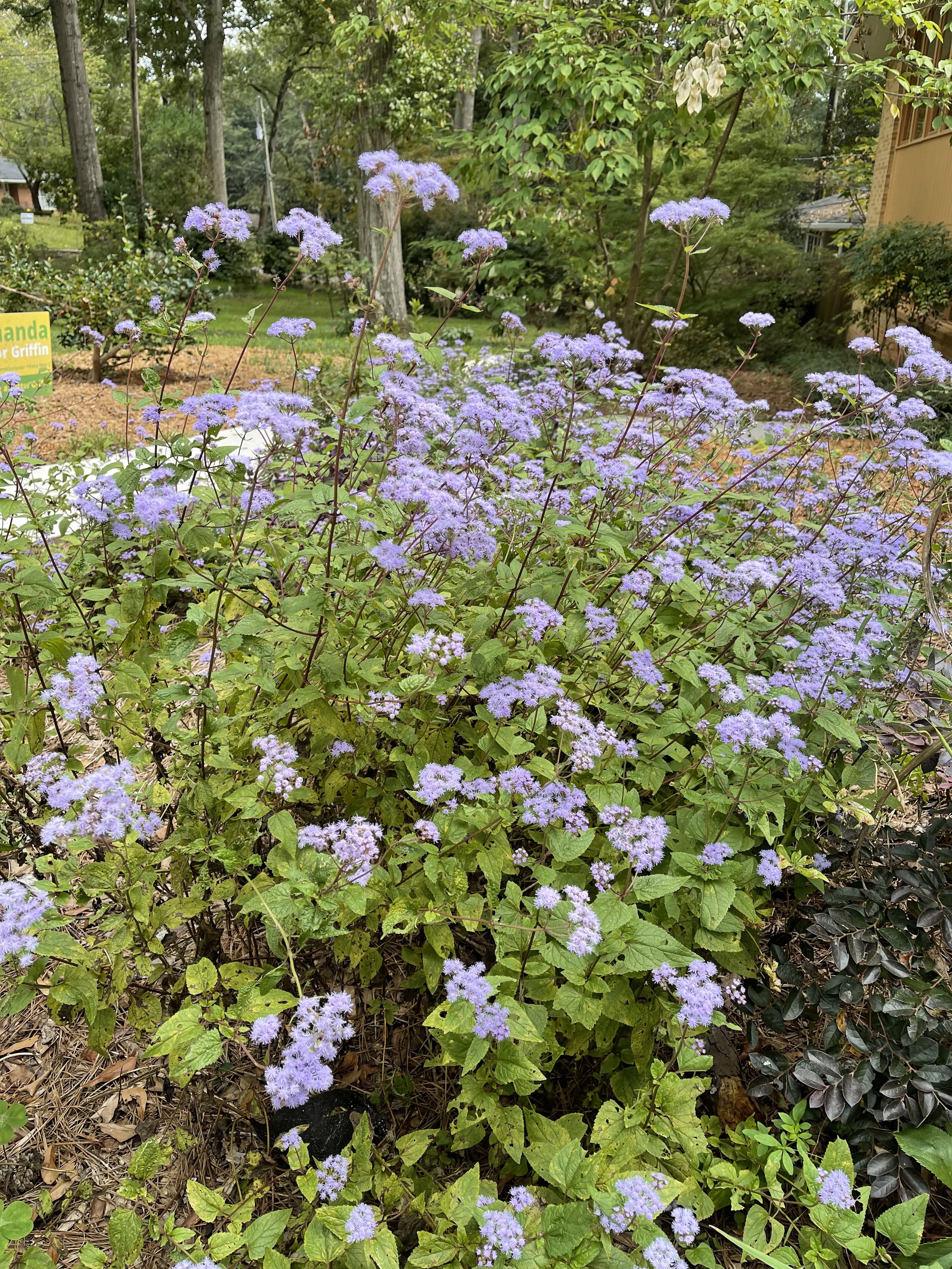 Image 1 of 2
Image 1 of 2

 Image 2 of 2
Image 2 of 2



Mistflower (Conoclinium coelestinum) Seedling
Mistflower reaches up to two feet in height with downy, purplish, branching stems in moist or low savanna settings. Its opposing, large-toothed leaves are oval to triangular.
Resembling a lovely blue-purple fog when found in dense stands, the disk flowers form in clusters of 35-70 at the tops of stems in late summer and autumn, attracting late-season butterflies. It will spread so should be planted with caution in small landscape situations. Insects that feed on Eupatorium species (Bonesets) may also use Mistflower as a host plant.These species include Haploa clymene (Clymene Moth), Phragmatobia lineata (Lined Ruby Tiger Moth), and the Schinia trifacia (Three-Lined Flower Moth).
Other common names in use: Hardy Ageratum, Wild Ageratum or Blue Boneset. It was formerly classified as Eupatorium coelestinum.
Perennial
Partial Sun
Soil Moisture: Wet, Medium-Wet, Medium
Height: 2 feet
Bloom Time: Sept. Oct.
Advantages
Pollinator Favorite: butterflies, moths, bees, wasps, beetles
Bird Favorite: seeds, insects, fruit, nectar, nesting, perch
Deer Resistant
Plant Spacing
1'-2'
Grown from neonicotinoid-FREE seeds. You will receive your plant in a 4" compostable pot.
Mistflower reaches up to two feet in height with downy, purplish, branching stems in moist or low savanna settings. Its opposing, large-toothed leaves are oval to triangular.
Resembling a lovely blue-purple fog when found in dense stands, the disk flowers form in clusters of 35-70 at the tops of stems in late summer and autumn, attracting late-season butterflies. It will spread so should be planted with caution in small landscape situations. Insects that feed on Eupatorium species (Bonesets) may also use Mistflower as a host plant.These species include Haploa clymene (Clymene Moth), Phragmatobia lineata (Lined Ruby Tiger Moth), and the Schinia trifacia (Three-Lined Flower Moth).
Other common names in use: Hardy Ageratum, Wild Ageratum or Blue Boneset. It was formerly classified as Eupatorium coelestinum.
Perennial
Partial Sun
Soil Moisture: Wet, Medium-Wet, Medium
Height: 2 feet
Bloom Time: Sept. Oct.
Advantages
Pollinator Favorite: butterflies, moths, bees, wasps, beetles
Bird Favorite: seeds, insects, fruit, nectar, nesting, perch
Deer Resistant
Plant Spacing
1'-2'
Grown from neonicotinoid-FREE seeds. You will receive your plant in a 4" compostable pot.
